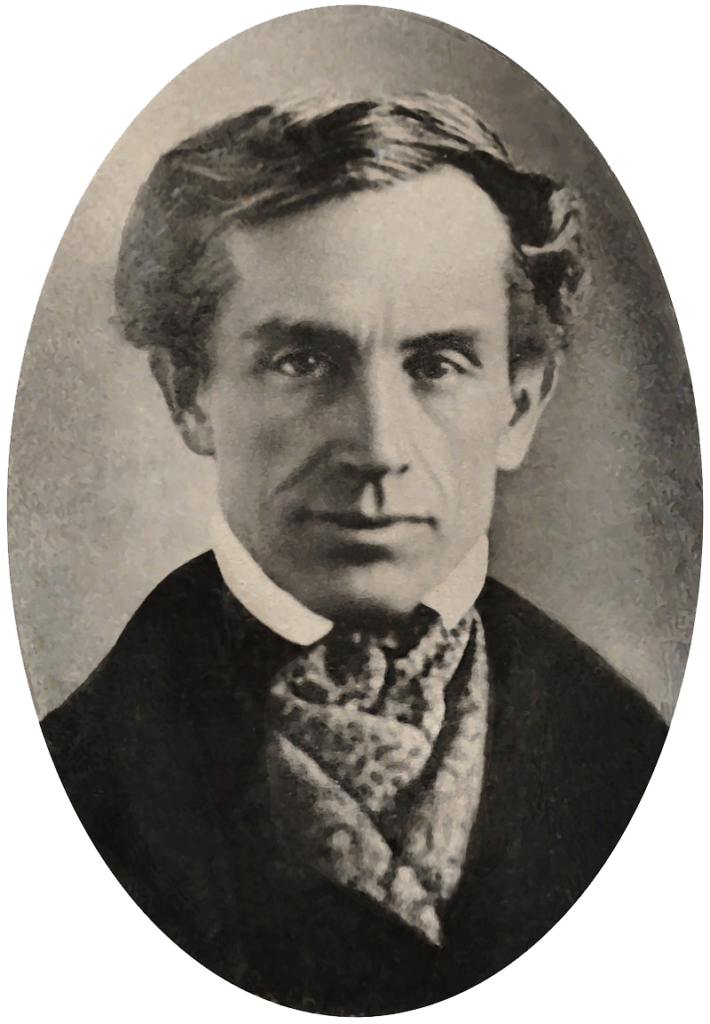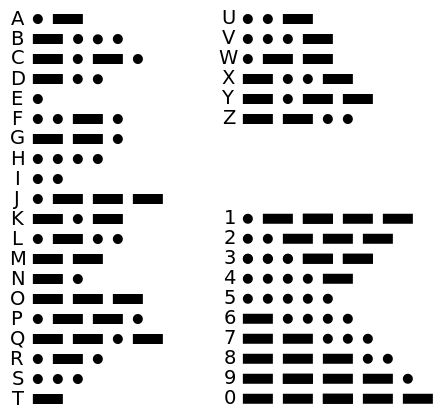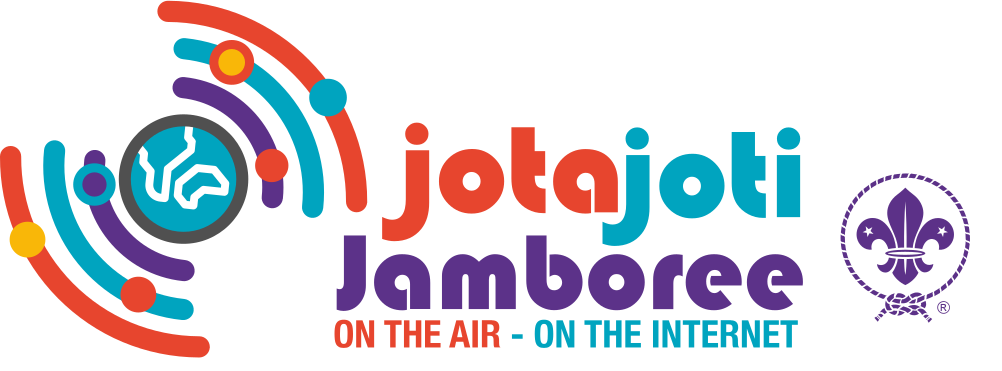Morse Code
Samuel Finley Breese Morse (April 27, 1791 – April 2, 1872) was an American inventor and painter. After having established his reputation as a portrait painter, in his middle age Morse contributed to the invention of a single-wire telegraph system based on European telegraphs. He was a co-developer of Morse code and helped to develop the commercial use of telegraphy.
Morse code can be transmitted in a number of ways: originally as electrical pulses along a telegraph wire, but also as an audio tone, a radio signal with short and long tones, or as a mechanical, audible, or visual signal (e.g. a flashing light) using devices like an Aldis lamp or a heliograph, a common flashlight, or even a car horn. Some mine rescues have used pulling on a rope – a short pull for a dot and a long pull for a dash.
Morse code is transmitted using just two states (on and off). Historians have called it the first digital code. Morse code may be represented as a binary code, and that is what telegraph operators do when transmitting messages. Working from the above ITU definition and further defining a bit as a dot time, a Morse code sequence may be made from a combination of the following five bit-strings:
- short mark, dot or “dit” ( ▄ ): 1
- longer mark, dash or “dah” ( ▄▄▄ ): 111
- intra-character gap (between the dots and dashes within a character): 0
- short gap (between letters): 000
- medium gap (between words): 0000000
Note that the marks and gaps alternate: dots and dashes are always separated by one of the gaps, and that the gaps are always separated by a dot or a dash.
Morse messages are generally transmitted by a hand-operated device such as a telegraph key, so there are variations introduced by the skill of the sender and receiver — more experienced operators can send and receive at faster speeds. In addition, individual operators differ slightly, for example, using slightly longer or shorter dashes or gaps, perhaps only for particular characters. This is called their “fist”, and experienced operators can recognize specific individuals by it alone. A good operator who sends clearly and is easy to copy is said to have a “good fist”. A “poor fist” is a characteristic of sloppy or hard to copy Morse code.




Send and decode morse code!
There are several apps that can be used to receive and decode morse code.For a smart phone, use them to listen to morse code on one of the online radios and have it decode the text on screen.
For Android phones, have a look in the Google Play Store.
For iOS phones and tablets, have a look in the App Store.
If you want to learn morse code, this app from Google might help! Google Learn
It shouldn’t be necessary to pay for any app to take part in JOTA activities!

